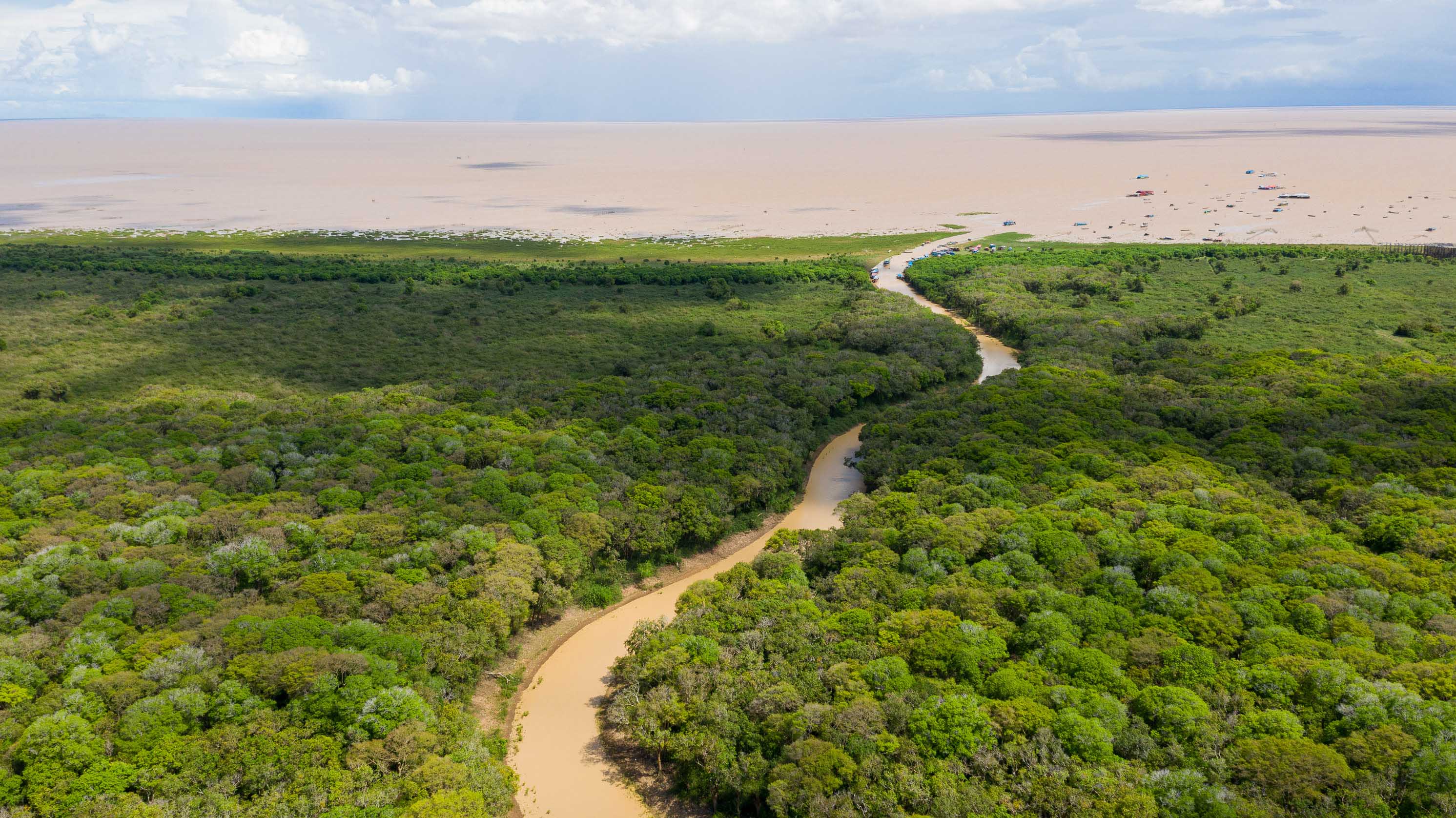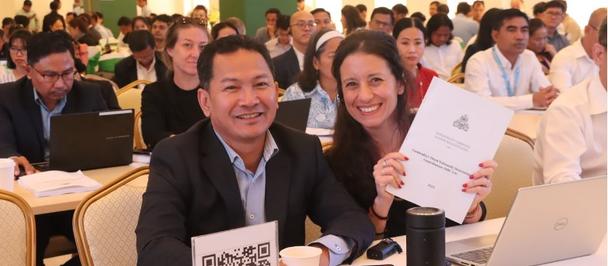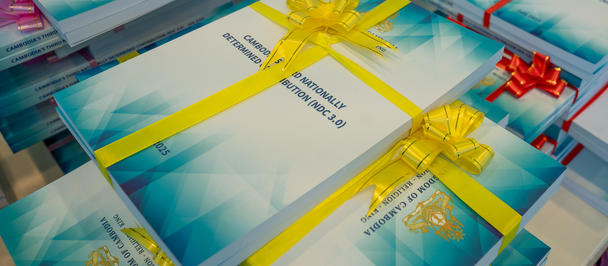Siem Reap province in Cambodia. The country is working to formulate an effective response to the climate emergency.
This year, our humanity has faced two key crises: the COVID-19 pandemic and forest fires that have raged across the world.
There is strong evidence that COVID-19 originated in bats that spread to humans through intermediaries. As for forest fires, rising global temperatures intensified damages across the world.
If we pause for a moment, we would notice that the root causes of both events relate to how we interact with our environment. These incidents have made it evident that current modes of development premised on the destruction of our natural resources and biodiversity are neither sustainable nor safe.
There is consequently an urgent need to tackle two fundamental environmental challenges.
First, climate change. According to a recent report from the World Meteorological Organization, there is a high risk that global temperatures could exceed the crucial 1.5°C target above pre-industrial levels within the next five years. Across the planet, any additional rise in temperature will intensify climate disasters, causing larger typhoons, bigger floods, rising sea levels, more severe droughts, and increasing forest fires, as we are already observing.
Second, the unsustainable use of natural resources. According to the International Resource Panel, over 90 billion tons of primary natural resources are extracted every year. This puts enormous pressure on both natural resources and ecosystems. Ninety percent of all biodiversity loss and water stress is related to extraction of resources. It is now widely recognized that we are in the sixth mass extinction of species, exclusively on account of humans. Aside from destroying innumerable ecologies and species, the unsustainable extraction and disposal of resources leads to rapidly growing problems with pollution and waste.
To sustain our vital environment for future generations and to ensure a safe future, we must transform how our economies operate, how we use materials and how we dispose of waste.
Current economic models are linear. They begin with extraction of resources, which are turned into products, are then consumed, and finally are disposed of.
The circular economy is fundamentally different because it seeks to decouple economic growth from adverse environmental impacts by closing the loops of the entire value chain. It promotes the use of sustainable materials and clean, renewable energy, such as solar and wind energy. It promotes improved efficiency for production, and sustainable consumption. And it promotes efficient recycling of materials as well as energy recovery.
Widespread adoption of circular economy models can ensure sustainable management of natural resources and biodiversity protection, through significant reduction of the use of natural resources and energy. It can also reduce the volume of waste, greenhouse gas emissions, and air pollution. In addition, improved efficiency can reduce the costs of production and increase the competitiveness of business and the economy. New jobs can also be created by developing new value chains in renewable energy, recycling, energy recovery, and other sectors.
A circular economy has strong potential to spark positive environmental and economic change. It can guide sustainable development pathways for countries at all income levels, including developing countries like Cambodia.
Today many countries are in the process of developing or implementing circular economy policies. The goal is to transition from the linear economy approach while facilitating a green recovery from the devastating COVID-19 pandemic.
In December 2019, the European Union (EU) announced the Green Deal, which would make Europe the first climate-neutral continent by 2050. As part of this important, ambitious agenda, one billion euros have been committed to research and innovation to respond to the climate crisis and focus on protecting the environment while enhancing job creation and the quality of development. At the cornerstone of the strategy is a European transition to a circular economy.
Cambodia, too, is also working to formulate an effective response to the climate emergency. Through Nationally Determined Contributions (NDCs) with support from Sweden, the EU, and the United Nations Development Programme (UNDP), the kingdom is developing a national Circular Economy strategy. Among several important goals, the strategy will help the country to tackle climate change, the degradation of natural resources and biodiversity, energy shortages, growing volumes of waste, and increasing air pollution, while creating more and better jobs, and strengthening competitiveness of its economy and industries.
Effective involvement from all countries and stakeholders is fundamental for a green recovery and transition to a circular economy.
The government has an important role to play in creating an enabling environment for inducing shifts towards sustainable consumption and production. It can do so by developing regulations, and by providing economic and financial incentives such as green finance and procurement.
The private sector has to drive innovation, mobilize investments, and transform their business models. Financial and technical support from international partners and financial institutions is also crucial to facilitate or accelerate investments towards a circular economy.
Research institutions are important to create and share knowledge, and to build the capacities necessary to adopt circular economy approaches.
Finally, to ensure lasting change, it is critical that citizens understand the relation between their actions and environmental consequences. Only in this way can they adopt sustainable consumption lifestyles and shape a sustainable future for their country—and for the planet.
The fight against the daunting challenges of climate change and natural resource destruction won’t be easy. But if we all commit to a green recovery and circular economy, we can ensure a sustainable and prosperous future.
Nick Beresford, Resident Representative, United Nations Development Programme (UNDP) in Cambodia
Dr. Moeko Saito Jensen, Environmental Policy Specialist, UNDP in Cambodia
Carmen Moreno, Ambassador, Head of European Union Delegation to Cambodia
Björn Häggmark, Ambassador of Sweden to Cambodia

 Locations
Locations




